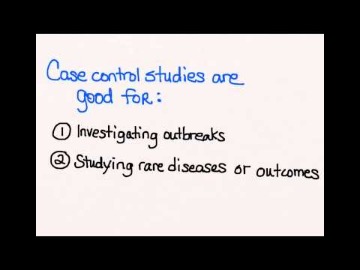So for every 40-year-old extremely educated man who follows a low-carb food regimen, you discover one other forty-12 months-old highly educated man who does not, to compare the load loss between the two subjects. Keep up the nice work, I have learned r statistical abilities from articles. This section incorporates best data science and self-development sources to help you on your path. In a double blind experiment, neither the researcher nor the topic is aware of whether or not or not a remedy was utilized.

Traditional input variable adjustment did not sufficiently management for confounds in simulated and real datasets. This is as a result of input variable adjustment can’t take away all confounding results that can be learned by machine studying strategies, as we show illustrative examples and in the simulated information. This contains cross-validated enter adjustment as proposed by (Snoek et al. 2019) and adjustment utilizing a location and scale adjustment mannequin as utilized in ComBat (Fortin et al. 2017). Therefore, it’s attainable that some of the previously printed machine studying results are pushed by insufficiently adjusted confounding as a substitute of the sign of interest. Machine learning methods weak to this problem include all nonlinear machine learning strategies and linear machine studying strategies that are fitted optimizing a special perform than a regression used for enter adjustment, such as assist vector machines.
Confounding Variable Examples
where weight was set to 3, four, and 5 representing low, medium, and excessive confounding, because the outcome variable was created solely as a function of age, there should be no sign within the knowledge after adjustment for age. The model used to perform confound adjustment could be estimated utilizing all available information, however, in some cases, it has been really helpful in the literature to use solely a subset of the information to fit the confound adjustment model. However, as was identified by Linn et al. , this process will not sufficiently take away the results of confounds, and thus it will produce biased results as illustrated in Figure four. This is as a result of information from wholesome controls are insufficient to estimate the effect of confounds in topics with a disease. It is essential to point out that – just like the regression setting – this process ignores potential miscalibration of predictions, corresponding to systematic overconfidence or underconfidence of estimated possibilities.
We showed that confound adjustment of enter variables can fail to adequately control for confounding effects when machine learning strategies are used. For this reason, we propose that confound adjustment of enter variables should be averted, and the already published machine studying research employing this methodology must be interpreted with care. We offered a simple strategy of controlling for confounds on the stage of machine studying predictions themselves. This strategy produced more valid outcomes even beneath heavy and complicated confounding. Using mannequin predictions as an enter to an additional regression model to judge its performance just isn’t a new concept; it goes again no less than to Smith and Rose . The proposed strategy is carefully related to a way generally known as pre-validation (Tibshirani and Efron 2002; Hoffling and Tibshirani 2008) utilized in microarray studies to test if a model based on microarray data adds anything to scientific knowledge.
A considerably frequent, however invalid strategy to account for nonlinear effects of confounds is categorizing confounding variables. For example, as a substitute of correcting for BMI, the correction is carried out for classes of low, medium, and excessive BMI. Such a categorization is unsatisfactory because it retains residual confounding inside-class variance in the data, which might result in both false constructive and false negative results . False-optimistic outcomes as a result of there can still be residual confounding data offered within the enter data, and false negative as a result of the variance in the information due to confounding variables will decrease the statistical power of a test. Thus, categorizing continuous confounding variables shouldn’t be performed.
Lowering The Potential For Confounding
However, such a handbook examine just isn’t possible for the massive variety of variables commonly included in neuroimaging machine learning research. Another risk is to use various resampling or reweighting strategies to create a dataset the place the confounding variable isn’t associated to the end result (Pourhoseingholi et al. 2012; Rao et al. 2017; Chyzhyk et al. 2018). Since solely a subset of accessible subjects is used, this results in information loss and highly variable estimates. Another drawback of this strategy is that the distribution of variables in the take a look at set not matches the distribution of the unique dataset or the inhabitants. For example, when controlling for a intercourse effect in the machine studying prediction of Autism prognosis, resampling strategies could be interpreted as the efficiency of the machine studying model in a inhabitants where intercourse is not associated to the autism prognosis.
If an effect of a variable on the outcome in the entire dataset is zero, then the impact discovered in the training set could have an opposite signal within the test set, resulting in negatively biased outcomes. Given enter variables x, confounds c, and outcome values y, the inaccurate means is to shuffle solely y, which might remove the connection between x and y but in addition between c and y, leading to biased results. The right method is to take away the relationship between x and y a however maintain the connection between c and y mounted.
For instance, in a multi-web site analysis, the info variance could be larger in knowledge from one scan-site than one other. As was described by Görgen and colleagues , variations in variance can be learned by non-linear but also linear machine learning fashions. Therefore, even after centering by website, a machine learning mannequin can be taught that subjects from one website are more likely to have extreme values of enter variables than subjects from the opposite web site . This can be mitigated by additionally adjusting the dimensions of the residuals. The easiest way is to divide residuals in each scan web site by their standard deviation or model the residuals’ normal deviation as a random effect. Such a modeling strategy is carried out by ComBat procedure for adjustment of batch results of microarray data (Johnson et al. 2007) and scan-website effects of MRI information (Fortin et al. 2017).
But, randomization requires dedication in pattern choice and access to a lot of individuals so that they, no matter their assigned group, would experience the identical confounding variables. The unlucky reply in educational analysis is that you could’t completely guard against confounding variables. But, changing into conscious of potential confounding variables related to any research you need to conduct helps.









More Stories
I Don’t Know The Way To Love Him
The Social Gradient In Stress And Depressive Symptoms Among Adolescent Ladies
Boston Celtics Vs Cleveland Cavaliers Odds & Matchup Stats